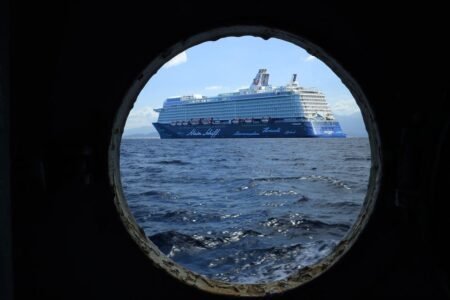The European Commission adopted on 25 June the second package of legislation for a Single European Sky (SES II). These proposals aim to further improve safety, cut costs and reduce delays. That will in turn mean lower fuel consumption, so that airlines could save up to 16 million tons of CO2 emissions and cut their annual cost by between two and three billion euros. This full reform of the European air traffic management system will be key to managing the doubling of traffic expected by 2020. Not only airline passengers, but also freight forwarders and military and private aviation will benefit. The package will create additional jobs in aviation. Meanwhile, European manufacturing industry will gain from being at the forefront of innovation in air traffic management technology (i.e. satellite based systems – Galileo, datalink, etc.), thus giving it a competitive edge on global markets.
Advertisement
The massive increase in demand for air transport is placing a strain on infrastructure capacity: 28000 daily flights by 4700 commercial aircraft are pushing airports and air traffic management (ATM) to their limits. The fragmentation of air traffic management hinders the optimal use of available capacity and imposes an unnecessary financial burden on aviation. Meanwhile, the traffic increase also requires better safety standards, while increasing environmental awareness is pushing the aviation industry to demonstrate its environmental performance.
The Single European Sky regulation adopted in 2004 (SES I) has not delivered the expected results in some important areas. The process of integration within functional airspace blocks (FABs), regardless of national borders, has encountered numerous hurdles. Air traffic control is mistakenly related to national sovereignty. Obviously this is a complex argument, but, instead of prompting innovative solutions for exercising sovereignty, it has been used to block cross-border integration.
There has been little progress in the overall efficiency of the design and use of the European air .
This second package is based on :
- the existing needs to be sharpenedto deal with performance and environmental challenges.
- the (Single European Sky ATM Research) programme is should help in the development of future technology.
- the competence of the (EASA) is to be extended to aerodromes, air traffic management and air navigation services.
- the needs to be implemented.
The legislative components of the SES II are expected to at the latest.
, it does not replace it. SES II aims to strengthen the key points established in SES I. The goal is to improve the original legislation from 2004, by taking into account the lessons learned and the evolution of the industry.
SES II is committed to reducing greenhouse gas emissions from aviation : this is precisely the target of the Single Sky policy and the SESAR initiative. This objective will be realised by:
- Abolishing unnecessary extensions to the length of flights (through the defragmentation of European airspace and the implementation of Functional Airspace Blocks);
- Optimising the flight from take-off to landing;
- Optimising the organisation of the turnaround process.
The main enhancements include:
- in the fields of safety, capacity, flight and cost efficiency and the environment;
- A to ensure the convergence of national ATM systems;
- A definite commitment date for the Member States to improve performance by .
The of the Single European Sky. It means organising, integrating and managing the traffic in accordance with the actual needs of the aviation community, enabling optimum use of airspace. Member States will look beyond national borders when assessing the creation of a FAB justified by their overall added value based on a cost-benefit analysis.
. Every time a plane enters the airspace of a Member State, it is serviced by a different air navigation service provider on the basis of different rules and operational requirements. This fragmentation affects safety, limits capacity and above all adds to cost.
With the SES II package, , instead of on airspace issues alone. They will allow for thus providing a valuable tool for reaching the binding performance targets proposed in SES II.
The current excellent aviation safety levels need to be maintained and even improved to mitigate the safety risks posed by growing traffic and congestion. It is essential to . These risks fall under the area of aerodrome infrastructure and equipment and their operation, as well as under the scope of air traffic management (ATM) and air navigation services (ANS). However, those subjects are not yet included in the created in 2002.
To fill this gap, the Commission has proposed that the to cover these remaining areas, crucial to aviation safety.
Eurocontrol will gradually become the and the managing body of the EU’s ATM network (central management of flows, rationalisation of routes, deployment of cross-border infrastructures and harmonisation of the allocation of frequencies).
Eurocontrol will also become the “performance Review Body”, charged with the essential task of defining and evaluating performance targets for the Single Sky.
SESAR (Single European Sky ATM Research) is a major and unique EU research & development programme that brings together, in a public-private partnership, aviation stakeholders in order to develop the . The definition phase (2006-2008) has delivered an “ATM Master Plan” which needs to be validated in order to trigger the
The Commission created the The SESAR Joint Undertaking manages the 2.1 billion programme, funded by the European Commission (700 million), Eurocontrol (700 million) and the industry (700 million). Financial contributions from the private sector are under evaluation and should lead to formal membership agreements before the end of 2008.
The real added value of SESAR will come with implementation, when SESAR products are deployed in a coordinated and synchronised way throughout the EU.
The GALILEO satellite radio navigation system, launched by the European Union and the European Space Agency, is the first worldwide satellite positioning and navigation system specifically designed for civil purposes. It will not only complement the current (US military) GPS system, but also offer state-of-the-art services with increased performance in terms of accuracy, continuity and availability in comparison to today’s satellite navigation systems. The development and deployment of the GALILEO programme is fully financed by the European Commission (3.2 billion) (including the construction and launch of 30 satellites and the setting up of the ground-based components) and is scheduled to start operating from 2013 onwards: more precise and available everywhere even when there is no ground support (international water). In this sense, .
The European Aviation System is moving towards a better performing environment and SESAR will play a key role in achieving the Single European Sky. For its part, GALILEO will provide an improved and refined satellite navigation system, as a valuable technical tool for civil aviation.
Airspace users, especially , are the main clients of air navigation services. They pay for the air navigation services through levies per flight. With the implementation of SES II and the setting of performance targets, airspace users will get a .
, together with air traffic management, constitute the infrastructure for aviation. Efficient flights can only happen if all phases of flights are covered through a network of rules, procedures and information flow, including a ; better management of capacities on the ground is a major issue for airport operators. In this context, it is proposed to set up an .
The proposed package will affect the work of air traffic controllers on several different levels:
(1) the controllers will have to focus more on performance; the new regulation will prescribe, for example, a maximum level of CO2 emission for each flight;
(2) air traffic controllers will have access to more information; information will be circulated between all operators through a single communication network, comparable to an internet for air traffic management;
(3) the SESAR system will provide more automated assistance to controllers as the aircraft will be better equipped with surveillance, and automatic position report capabilities. The controller will be able to spend more time focusing on safety, rather than on radio calls to all the pilots in his sector.
European citizens will enjoy various benefits:
- Due to , SES II will allow citizens to travel more easily.
- SES II will also contribute to in Europe as European manufacturing industry will benefit from being at the forefront of a technological revolution that will provide it with a competitive edge on global markets.
- All citizens will benefit from .
38 states are currently committed to the SES initiative:
- The 27 Member States of the EU;
- The 9 countries that form part of the European Common Aviation Area signed in 2005: Norway, Iceland and the states of the former Yugoslavia.
- Switzerland and Morocco, which have signed a bilateral agreement with the EU.







